Ready to help treat your pet to a healthy life?
Cocker Spaniel Breed Guide: History, Fun Facts & Health
By : Trupanion Staff | Updated Sep 18, 2024
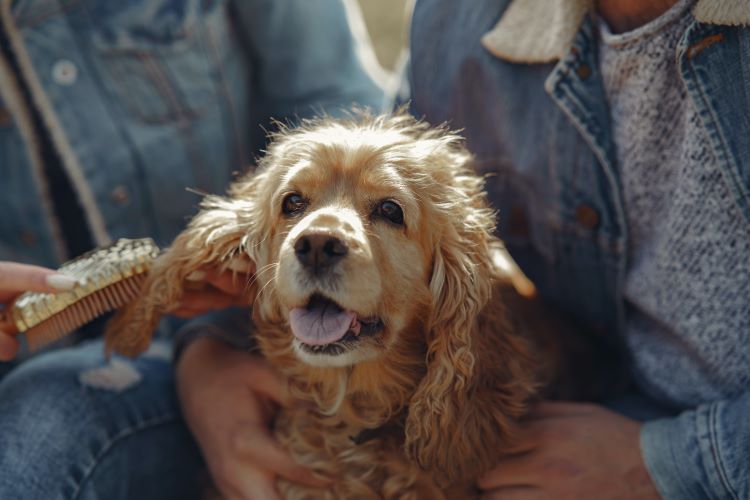
As many canine aficionados can attest, few things in life seem more sweet and genuine than the soulful expression of a Cocker Spaniel. "Cockers" are popular for their sweet and sensitive nature, along with their constantly wagging tail. Intelligent and eager to please, these dogs tend to want to be near their human family members as much as possible. This combined with their cute looks has helped these dogs stay sought-after in recent centuries, but there's a lot more than meets the eye.
Considering adopting a Cocker of your own or just interested in learning more about this dog breed with a rich background? This guide has you covered with the history, breed definitions, health and care tips, and more about the Cocker Spaniel. Let's kick things off with some fun facts!
Fun facts about Cocker Spaniels
- There are two types of Cocker Spaniel: the American Cocker Spaniel and the English Cocker Spaniel.
- Cockers are the smallest breed in the Sporting group.
- President Nixon owned a Cocker Spaniel named Checkers. The mention of this sweet dog during a televised address helped galvanize support and saved Nixon’s political career in 1952. The speech came to be known as the Checkers speech.
- You can thank a Cocker Spaniel for the invention of the boat shoe. A Cocker named Prince belonged to Paul Sperry. After watching his dog run across ice, Sperry inspected Prince’s paws to see how he managed not to slip. The pattern and texture of his paw pads inspired the non-slip soles of Sperry Top-Sider boat shoes — a popular brand since their release in 1935.
- Holding the spot of 30th most popular breed in the U.S. in 2018, Cocker Spaniels have reigned supreme at number one quite a few times in the past. They were the most popular breed for almost two decades, from 1936 until 1952, and again from 1983 to 1990.
- As expert bird hunters, the breed got its name from being especially useful in hunting Eurasian woodcock birds in English fields.
- A Cocker’s nose knows! Two Cocker Spaniels, named Tangle and Biddy, were among the first group of dogs trained as cancer detection dogs in 2004 (and came in as the top 2 most successful dogs of the group).
- Lady from “Lady and the Tramp” is a Cocker Spaniel. The breed’s role in this popular Disney film contributed to its popularity in the 1950s.
- These pups tend to live nice, long lives. The average Cocker Spaniel reaches between 12 and 15 years, but a Cocker named Uno lived for 22 years!
Breed definition: what is a Cocker Spaniel?
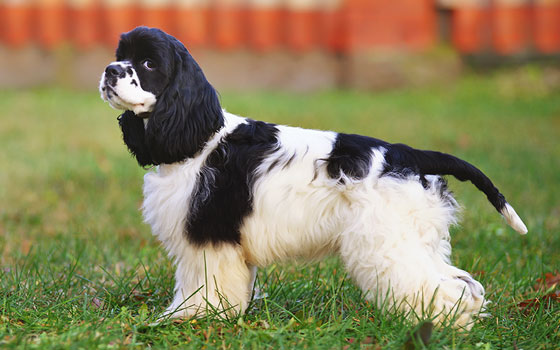
The Cocker Spaniel is best known as a small dog with large, almond-shaped eyes with long, silky ears. But while it is relatively short in stature, it is really more of a medium-sized dog breed than a small one (based on average sizes in adulthood). As far as coat color goes, Cockers come in a huge variety of hues, both solid and two-toned or "particolored."
But did you know that there are different types of Cocker Spaniels? This breed comes in two main varieties: the American Cocker Spaniel and the English Cocker Spaniel. While the two types share many similarities, each has distinct physical and behavioral traits. They also have differing history, which we'll get into in a bit.
The American Cocker Spaniel is slightly smaller and has a more rounded skull with a pronounced stop, giving it a distinctive, expressive face. Its coat is typically fuller and more luxurious, often requiring extensive grooming to maintain its soft, silky appearance. The American variety's ears are also longer and more heavily feathered. In contrast, the English Cocker Spaniel has a more elongated head and a flatter skull, with a less pronounced stop. This dog's coat is shorter and less profuse, making grooming somewhat easier. The English variety also tends to have a more athletic build, with a slightly longer body and a higher-set tail.
Behavior-wise, both breeds are known for their friendly and affectionate nature. That said, there are subtle differences. The American Cocker Spaniel is generally more outgoing and people-oriented, making for an ideal family pet. It thrives on human interaction and is known for being gentle and adaptable. The English Cocker Spaniel, while also friendly and often good with families, typically retains more of its hunting instincts. This type can be slightly more independent and energetic as a result, requiring a bit more exercise and mental stimulation to keep it happy.
As part of the Spaniel group of dogs, Cockers are sometimes confused for other types of dogs.
Similar dog breeds
- English Springer Spaniel
- Cavalier King Charles Spaniel
- Welsh Springer Spaniel
- Boykin Spaniel
History
Spaniels have long been a fixture in England, originally imported from Spain (hence the name “Spaniel”). Sporting dogs, more recently referred to as “gun dogs,” helped hunters flush birds from the water or brush. Spaniels weren’t categorized by specific breeds until the 1800s. Toy-sized Spaniels were kept as companion dogs, while medium and larger Spaniels were considered either land or water Spaniels, depending on what they helped hunt.
Because breeding was focused on working ability rather than particular looks, each litter could have different sizes of puppies. Their eventual job and their “type” would be determined by their weight when fully grown. Cockers were any spaniel under 25 lbs, while any over 25 lbs was classified as a Springer. The Cocker Spaniel’s name came from their prowess in hunting Eurasian woodcock, a small game bird found in the fields.
It wasn’t until the 1870s that the Cocker Spaniel was bred specifically as a Spaniel breed. James Farrow is credited with breeding a Cocker named Obo in 1882, who is now considered the “father of the modern breed.” The Cocker Spaniel became very popular in both England and the United States through the beginning of the 20th century.
North American history
It’s believed that one of the first dogs brought over to America was a Spaniel aboard the Mayflower. Spaniels most certainly played an integral role in helping settlers hunt game birds on the new continent. As Cockers became more and more popular across the pond in England, American interest increased as well, through the 1870s.
In 1881, Clinton Wilderming and James Watson formed the American Spaniel Club. The oldest breed club in America, it originally included Spaniels of all types before eventually splitting into more specific groups. The first studbook recorded by the American Kennel Club included a Cocker Spaniel named Captain.
As the breed became a popular companion and hunting dog, American breeders started to favor a smaller body type than the original English Cocker Spaniels. This split within the breed led to the creation of two separate Cocker Spaniel breeds — the American Cocker and the English Cocker. American Cocker Spaniels tended to be smaller, have a thicker coat, more domed head, and shorter muzzle than their British cousins. The American Kennel Club recognized the distinction between the two in 1946.
Cocker Spaniels were incredibly popular during the first half of the 20th century, and later in the 1980s. They were ranked as the most popular breed by the American Kennel Club from 1936 until 1952, and then again from 1983 until 1990. American Cocker Spaniels most recently came in as the 30th most popular U.S. breed in 2018, with English Cocker Spaniels ranking 52nd.
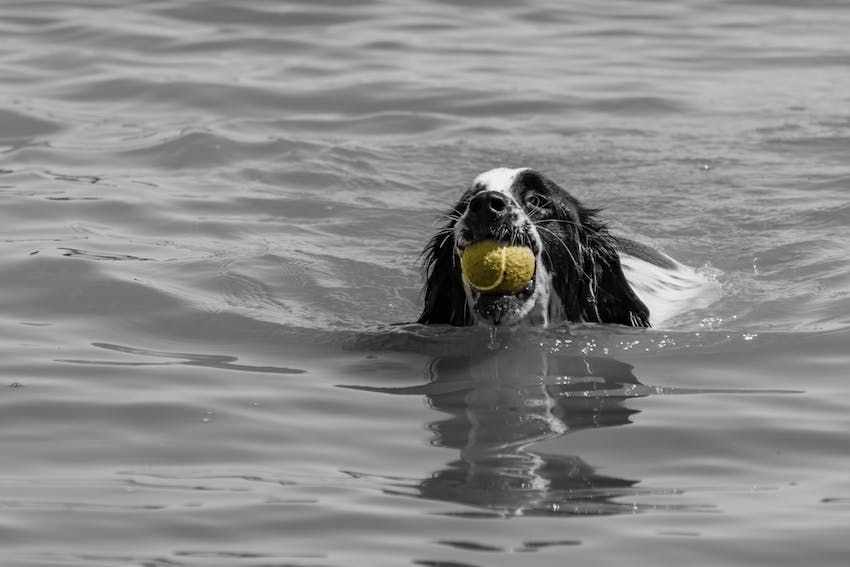
Behavior and training
A Cocker’s sweet disposition comes with a more sensitive nature. It’s important to train this eager to please breed with positive reinforcement methods that build confidence and a trusting relationship between dog and owner. Cockers love to learn new things and show off their skills — trick training is a favorite pastime for many Cocker Spaniel owners.
Their hunting genes mean they aren’t scared to chase after small animals and birds, so it’s important to keep them in a secure yard or on a leash for safety. They require a good amount of attention — if left alone too long, Cockers can become quite anxious. They love and need company, making them an ideal choice for empty-nesters or elderly owners who have lots of time to dedicate to them.
Do Cocker Spaniels play well with others?
Cocker Spaniels are quite a social breed. They can enjoy meeting new people and visiting new places as long as they have built positive associations with new things. Proper proactive exposure to new sights, sounds, people, dogs, and other animals as a young puppy is essential for their socialization skills.
Their sturdiness and sweet temperaments make Cocker Spaniels a popular choice for homes with children. If you obtain your Cocker Spaniel from a breeder, be sure they’re known to breed for good temperament and providing exposure to children in a positive way during young puppyhood. Continued socialization with children as a young puppy and adult will set them up for success. Young children and dogs should always be supervised, and it’s helpful for a dog to have their own “safe space” where they can go when they need some quiet time.
This breed can enjoy the companionship of other animals in the home, as long as they have been properly socialized and introduced. Due to their tendency for separation anxiety, many Cocker Spaniel owners have more than one so they can keep each other company.
Exercise and mental enrichment
Cocker Spaniels have the energy and stamina that Spaniels are known for, and require regular exercise. Not only does this help keep them at a healthy weight, but it also helps prevent separation anxiety. Daily walks and playtime are excellent ways to exercise a Cocker. They especially love playing fetch or chasing after a flirt pole, which works their natural flushing instincts.
Spaniels are intelligent breeds, and Cockers enjoy having puzzles to solve. Daily training for obedience or tricks is a great way to provide enrichment, keep their brain sharp, and build the human-canine bond. Providing food puzzles and interactive toys will also help prevent common Cocker Spaniel puppy behaviors, like chewing or boredom barking.
Common behavioral issues
Cocker Spaniels are a breed that often suffers from separation anxiety or isolation distress. They love being around their family, and too much alone time can cause stress and anxious behavior. They need positive exposure to alone time from puppyhood, to prevent or minimize any separation anxiety issues as they get older. It’s much easier to prevent than to treat. Make alone time a positive and relaxing experience for your Cocker Spaniel.
Spaniels are known for taking off after squirrels, birds, cars, or whatever catches their fancy! American Cocker Spaniels tend to have lower prey drive than the English Cocker Spaniels, but both love to chase. While this prey drive makes them excellent at playing fetch or competing in flyball, it can make for quite a dangerous situation. It’s best to keep your Cocker Spaniel on a leash or in a securely fenced yard and practice your come-when-called training.
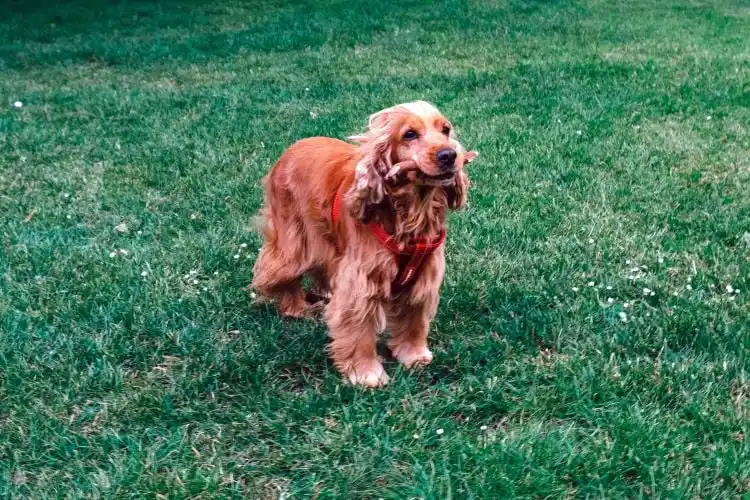
Ideal activities for Cocker Spaniels
Cocker Spaniels do well in many different activities:
- Rally obedience
- Flyball
- Agility
- Trick training
- Therapy work
- Nosework / tracking
Health and care
Cocker Spaniels are generally healthy dogs, but like all breeds, they are predisposed to certain health concerns. This doesn't necessarily mean that your pet will get sick, but it is a good idea to familiarize yourself with the potential risks (and protect your pet with a good dog insurance plan. Understanding your dog's potential health risks can help in providing better care and ensuring early detection and treatment, leading to better outcomes.
Common health concerns for Cocker Spaniels include:
- Ear infections
- Eye problems (specifically cataracts, glaucoma, and progressive retinal atrophy)
- Hip dysplasia
- Heart disease
- Autoimmune diseases
- Allergies
- Skin conditions (often resulting from allergies)
To help keep your Cocker Spaniel healthy, routine veterinary visits, a balanced diet, regular exercise, and proper grooming are essential. Monthly parasite prevention is also a must, and it'll help lessen the risk of skin conditions triggered by fleas and other parasites. By prioritizing your dog's health, you can take proactive steps to help them live a long, happy, and healthy life.
Grooming
Both American and English Cocker Spaniels have a double coat. However, the American’s coat tends to be thicker and often longer than its English counterpart. While English Cocker Spaniels can be any color, American Cockers have less variety in their coloring. They can be black, ASCOB (any solid color other than black), parti-color (two solid colors, one being white), and Black and Tan.
Both Cocker Spaniel breeds require intense grooming to keep their coats healthy and tangle-free. If left to grow a long skirt, daily brushing is required to prevent mats, and professional grooming should be done every 6 to 8 weeks. Many owners prefer to have their Cocker in an all-over short haircut, called the “puppy cut.”
It’s not advised to clip a double-coat, as it can result in uneven grow out, damage to the hair follicles, and increases the chance of sunburn and overheating. A double coat, when well-maintained, actually helps keep a dog cool, facilitating airflow across the skin. If you decide to have a double-coated breed clipped, whether per your veterinarian’s advice in dealing with skin issues or personal preference, it’s important to choose a groomer that knows how to avoid damaging the undercoat.
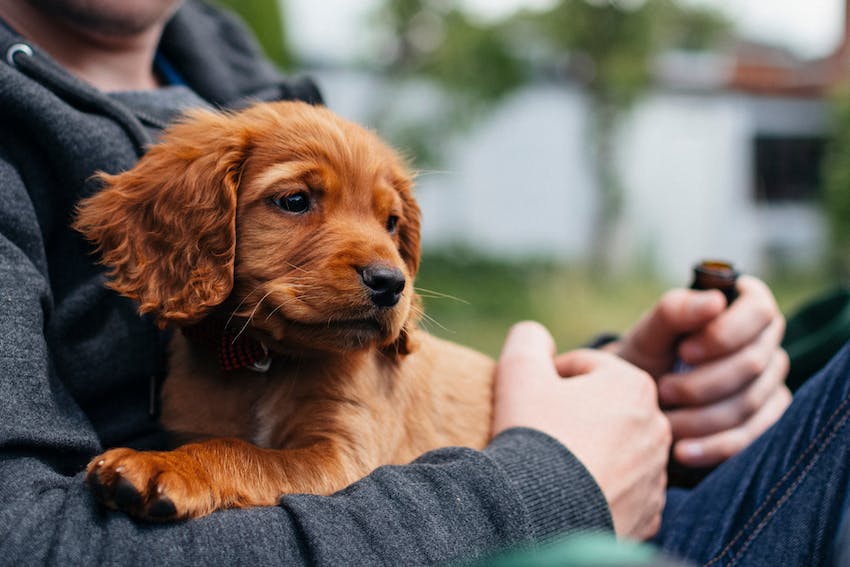
Your Cocker should have their ears cleaned regularly to help prevent ear infections. The hair on the inside of the ears should be kept short to help promote air circulation and prevent infection. Pair ear cleaning with regular nail trimming and teeth brushing to keep your Cocker fresh and healthy.
Introduce your Cocker Spaniel puppy to the grooming experience from a young age to create a positive association and encourage calm behavior during brushing and bathing. This breed is known for being sensitive at the groomer, but with positive training from puppyhood, the grooming experience can be a good one throughout their life.
Best brush for a Cocker Spaniel: Slicker brush, Pin comb
Cocker Spaniels in pop culture
These adorable dogs are popular with celebrities!
Famous owners of the Cocker Spaniel
- Oprah Winfrey (Media Mogul)
- Elton John (Singer)
- Prince William and Kate Middleton (Royalty)
- Bing Crosby (Actor)
- George Clooney (Actor)
- Lauren Bacall (Actress)
- Oscar de la Renta (Designer)
- Naomi Watts (Actress)
- Richard Nixon (President)
- Albert Staehle (Illustrator)
The Cocker Spaniel in media
- Lady from Lady and the Tramp
